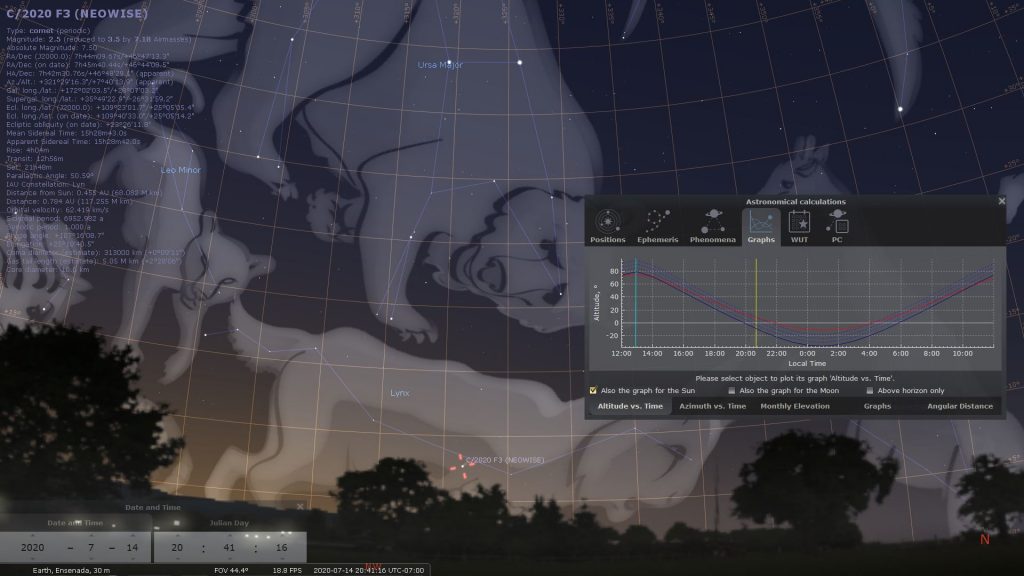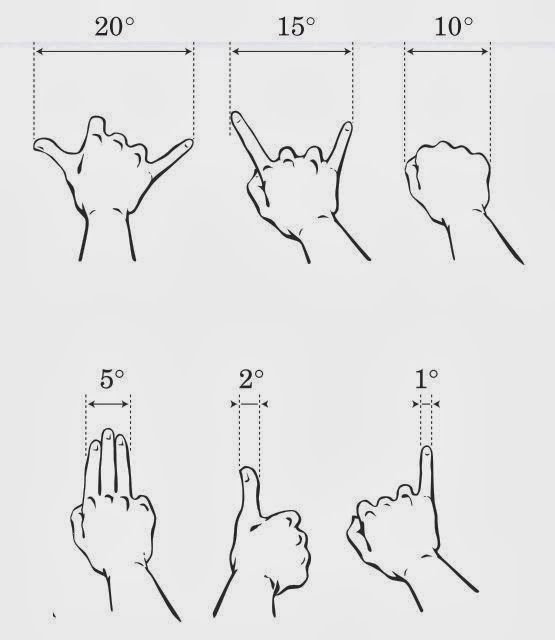Comet C / 2020 F3 (NEOWISE) has become one of the brightest in recent times, although it did not burn the saint: its current magnitude is 2.5 and it is increasing (the bigger, less is seen, for some reason; the brightest objects, instead, have negative magnitudes). Depending on your observation conditions, you're going to need binoculars (7×50 or better) or a small telescope to see its tail. Ahem. You also need a clear sky, Of course, and know the direction and height in which it is before dawn or at dusk.
The most accurate way to know the address and time at which “get up” and it “pone” NEOWISE from your location, Are you using Stellarium, a free planetarium, and free, created by the community. you find it here: http://stellarium.org/es/
Once inside Stellarium, you have to set your location on the compass button on the left bar. (or press F6), and then add to comet. for this, open settings (wrench button, F2) > Plugins > Solar System Editor.
There change to the Solar System tab, you click on Import orbital elements in MPC format, select Comets in type, MPC’s list of observable comets in Select bookmark, and click on Get orbital elements.
Type C/2020 F3 in the search field, checkmark C/2020 F3 (NEOWISE) in the results, y Add objects.
With this, you can now see the comet, even if it is in pixelated form! Click on the magnifying glass (o Control+F), look for C/2020 F3 and press Enter.
But to be able to see it, you have to wait for the night or use the magic of the planetarium to show the sky at a particular time. With the clock button (or F5) you can control the time, and in the bottom bar, you can turn off the atmosphere with the sun and cloud button (or press A).

In the information sheet on the left, you can see its azimuth (address) and altitude. with a compass (the one on your phone, for example, using an app like Positional) you can find his address. A telephone planetarium like Star Walk 2 The Sky View They can even show you which stars you are pointing your phone at., although in my experience they are less precise.

To calculate the height, you can use your hand over the horizon, with arm extended: a quarter is about 25°; a closed fist ~10°; pinky, annular and a half ~5°, and your thumb, approximately 2°:
Out of the brightest planets, most of the stars (including our friend C/2020 F3) They are only visible in almost complete darkness, one hour before the sun rises, or after laying. To plan the best observation time, opens the astronomical calculations window (astrolabe button, F10) y and a Graphics to see the height at which the comet is located throughout the day. He 0 is the horizon, and 20° Activate the Sun with Also the graph for the Sun. Now you can see what time they both get up and go down.
The tail is better seen with binoculars than with a telescope, and once located, maybe you can see it with the naked eye as a faint star, especially if you look at one side of him (cells on the outside of the retina, los walking sticks, they are more sensitive to light).
May you hit him with a good cane!!